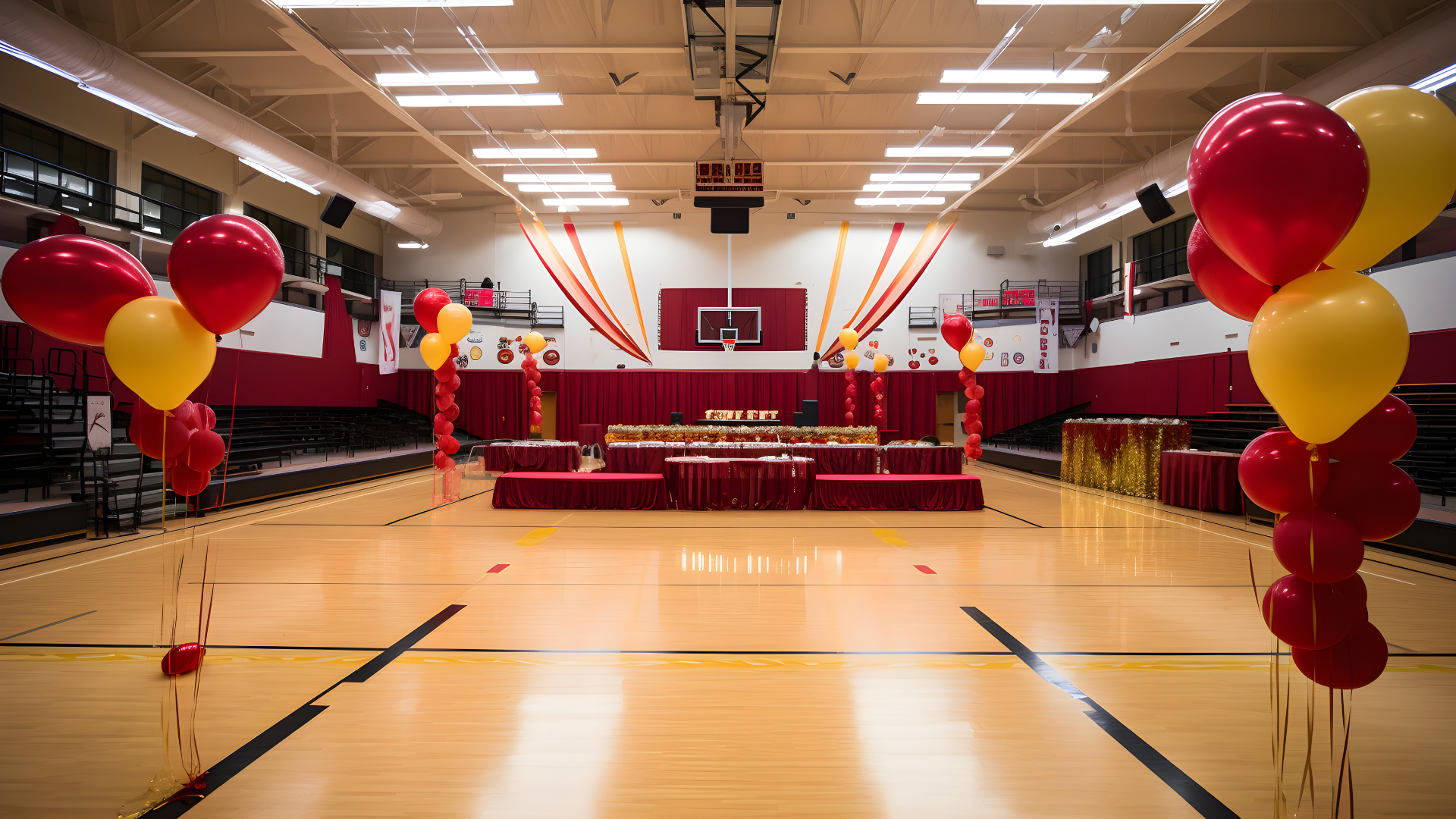How to Run a Successful Campus Event on a Tight Budget
Pulling off an unforgettable campus event when the dollars barely cover your latte habit can feel like walking a tightrope. Yet student planners do it every semester—and you can too. When you treat constraints as creative prompts rather than roadblocks, the end result often feels more authentic, more community-driven, and far less wasteful than big-ticket productions. Below is a deeper dive—roughly fifteen hundred words’ worth—into the mind-set, strategies, and on-the-ground tactics that transform “we’re broke” into “that was epic.”
1. Anchor Everything to a Crystal-Clear “Why”
Before you even open a spreadsheet, write a mission statement you can say in one sentence. “We’re hosting a Fall-Welcome Movie Night to help first-years make three new friends before mid-terms.” When every line item is judged against that promise, you’ll protect both your wallet and your attendees’ attention spans. Purpose is a compass: if an expense doesn’t steer you toward the mission, skip it.
Pro tip: Tape your mission statement to your laptop lid. Every time you’re tempted by upgraded lighting or scented candle centerpieces, look at that sentence.
2. Know Your Audience Like They’re Your Lab Partner
Events flop when planners chase trends instead of the crowd actually attending. Spend a morning in the dining hall or scroll through campus sub-reddits to eavesdrop on what excites—or annoys—your peers. A silent disco, for instance, might thrill extroverts but alienate students with sensory sensitivities. Understanding these nuances lets you allocate funds to the touches that feel inclusive rather than gimmicky.
3. Assemble a Lean, Passion-Fueled Dream Team
A small, committed crew beats a giant roster of half-interested volunteers. Recruit people who get genuinely animated when they talk about the event’s purpose. Then divide ownership, not just tasks: one person owns sponsorships, another owns venue and logistics, a third owns promotion. Ownership fuels pride—pride fuels follow-through. Bonus: tiny teams spend less on pizza bribes during late-night planning sessions.
4. Tap Hidden Campus Resources (a.k.a. The Freebie Hunt)
Colleges are treasure troves if you know where to knock:
- Student government grants often sit under-used; write a two-page proposal and you might snag $500.
- Academic departments may co-sponsor if your theme overlaps their field. A psychology club hosting a “Stress-Less Fair” could score funding or guest speakers from the Counseling Center.
- Resident advisors sometimes have budget for floor programs. Pair your event with their goals and share costs.
- Campus media (radio station, newspaper) are hungry for content; trade advertising for on-air shout-outs or feature articles.
Each “yes” you secure here is a line you can delete from your expense sheet.
5. Court Community Partnerships Instead of Big Purchases
Local businesses crave student foot-traffic. Offer exposure they can’t buy with a thirty-second TV ad:
- Cafés donate coffee in exchange for loyalty punch cards handed out at the door.
- Printing shops slash banner costs if their logo appears on programs.
- Independent bookstores or vinyl shops host pop-up booths, adding charm while absorbing décor costs.
Draft a one-page sponsorship deck—describe your audience size, social reach, and exactly how sponsors get visible. (Pro tip: Avoid “Gold/Silver/Bronze” tiers. Instead, match asks to tangible benefits: “Provide six veggie platters, get your brand on our Instagram countdown series.”)
6. Crowdsource the Creative Elements
Students are multi-talented (and eager for résumé bullet points):
- Graphic-design majors create your poster art as a course project.
- Theater techies run sound and lights—a dress rehearsal doubles as practicum hours.
- Film studies students livestream and edit highlight reels.
When contributors feel ownership, your event radiates authenticity, not corporate gloss.
7. Market Like a Micro-Influencer, Not a Billboard
Huge print runs drain cash and kill trees. Go digital-first:
- Storytelling posts: Instead of spamming “Come to our fundraiser!” share behind-the-scenes TikToks of paint-splattered volunteers or time-lapse stage builds.
- Countdown graphics: Simple Canva designs posted daily create urgency.
- Peer-to-peer invites: Ask each committee member to DM ten friends. Personal asks outperform mass emails tenfold.
- QR-code scavenger hunts: Hide codes around campus that unlock small prizes or clue videos; every scan is a micro-engagement.
Low cost, high imagination, and 100 percent reversible if the date changes.
8. Build a Volunteer Economy That Feels Fair
People crave meaning more than merch. Yes, T-shirts are fun, but thoughtfully crafted experiences forge deeper loyalty:
- Host a pre-event “volunteer mixer” with free snacks so folks bond before working together.
- Give micro-titles: “Green Room Guardian,” “Ambience Architect.” Business cards cost pennies, but the sense of pride is priceless.
- Spotlight volunteers on social media afterward; tag their side hustles or portfolios—exposure they truly value.
When volunteers feel celebrated, they return next semester, saving you the cost (and stress) of retraining.
9. Craft a Run-of-Show That Anticipates Chaos
Even the cheapest events fall apart if you’re winging it. Your run-of-show is the command center:
- Granular timeline: Break hours into 5-minute increments. If the keynote starts at 7:00 p.m., you need mic check at 6:35 p.m.–6:45 p.m., audience seating at 6:50 p.m., walk-on music at 6:59 p.m.
- Contact sheet: Every vendor, volunteer captain, and campus security extension, plus two backups, lives here.
- Decision tree: Predetermine what triggers plan B or plan C. If the projector fails, do you move to a panel discussion? If rain hits the outdoor stage, where does everyone sprint?
Print two hard copies. Murphy’s Law loves dead phone batteries.
10. Stretch Décor Dollars with Story-Driven Aesthetics
Instead of splurging on random balloons and glitter banners, pick one visual theme that ties to your mission statement. An environmental club’s benefit concert might use secondhand fabric backdrops and potted plants borrowed from the greenhouse. Cohesive DIY elements feel intentional—and your audience will ignore pricier absences because the vibe makes sense.
11. Feed the Masses Without Feeding the Debt
Professional catering can devour half a budget. Alternatives:
- Bulk warehouse runs for snack stations: popcorn in rented machines, build-your-own-trail-mix bars.
- Potluck potlatches: Encourage cultural clubs to bring signature dishes; reimburse ingredient receipts under a small cap.
- Food-truck partnerships: Some trucks waive appearance fees if they keep sales. Negotiate student discounts so attendees still feel looked after.
Always include vegan, gluten-free, and allergen-safe signage. Inclusivity costs nothing but earns trust.
12. Make Sustainability a Selling Point, Not an Afterthought
Zero-waste goals resonate with Gen Z and often cut costs:
- Ditch single-use plastics—offer water refill jugs and ask attendees to BYO bottle.
- Use digital tickets and signage.
- Repurpose stage décor for future events or donate to theater departments.
Write a short “Green Impact” blurb in your follow-up email so participants see their eco-choices quantified (“We diverted 18 pounds of waste from landfills!”).
13. Budgeting 101: From Spreadsheet to Safety Net
Open a shared Google Sheet and label four columns: Projected, Actual, Variance, Notes. Update in real time. Three key guardrails:
- Pad 10 percent: Hidden fees—taxes, last-minute tape—will appear.
- Log in-kind contributions at fair market value so you know true cost.
- Color-code overspends red the moment they occur. Instant visibility forces problem-solving, not denial.
When you reconcile afterward, you’ve built a template for future planners, too. Legacy is a budget hack—future you will thank present you.
14. Crisis Management: When the Dollars Run Dry
No matter how airtight your prep, curveballs happen. Here’s the triage order:
- Protect attendee experience: If the sound board fries and renting a new one blows the budget, reallocate funds from non-essential décor before touching the audio line.
- Seek emergency sponsors: A shout-out on the marquee or a logo on the livestream can still be negotiated forty-eight hours out.
- Scale, don’t cancel: Shrink side-activities rather than kill the main show. Attendees would rather have one awesome keynote than five half-baked workshops.
- Communicate transparently: “We’re simplifying the program to focus on what matters most” sounds proactive, not broke.
Remember: resourcefulness is your brand. Most students will cheer you on when they see the hustle up close.
15. Post-Event Alchemy: Turn Success into Seed Money
Your event’s value doesn’t end when the lights shut off. While memories are fresh:
- Send a gratitude blast to partners, volunteers, and attendees within twenty-four hours. Include highlight photos they’ll want to re-share (free marketing for next year).
- Publish measurable wins: “742 check-ins, 143 new club sign-ups, $2,100 raised for the food pantry.” Hard data impresses administrators holding purse strings for future grants.
- Host a debrief circle: Gather your core team for pizza and brutally honest feedback. Capture lessons in a sharable doc—this becomes institutional memory.
- Update your sponsorship deck with stats and photos; line up next semester’s anchors while goodwill is high.
A tight-budget triumph is both proof of concept and leverage. Use it to make the next project easier to fund.
A shoestring budget isn’t the enemy—it’s the spark that forces ingenuity, collaboration, and authenticity. Your attendees won’t remember whether your stage backdrop was hand-painted or professionally printed; they’ll remember how the event made them feel, what new friends they met, and that sense of shared ownership unique to campus life. So embrace the constraint, rally your people, and create something that leaves the quad buzzing long after the folding chairs are stacked.
Now grab that spreadsheet and start dreaming—frugally, creatively, fearlessly.
How do I plan a campus event?
Begin with a mission statement, recruit a small committed team, map a backward timeline, and hunt down free campus resources before spending a dime. Then iterate: budget → partner → promote → rehearse.
What’s on a successful event checklist?
- Goal statement
- Detailed timeline
- Shared budget sheet
- Venue/permit confirmations
- Marketing calendar
- Staffing plan with backups
- Run-of-show
- Contingency triggers
- Post-event survey link
How do I budget for an event as a planner?
Categorize costs, assign realistic figures (with links to quotes), log in-kind donations, update variances weekly, and keep a 10 percent emergency buffer. Treat sponsorship income like actual dollars only after contracts are signed.
What if the event goes over budget?
Prioritize attendee-facing essentials, seek last-minute sponsors, scale non-critical elements, and communicate changes early. Transparency buys grace; scrambling in silence breeds rumor.











